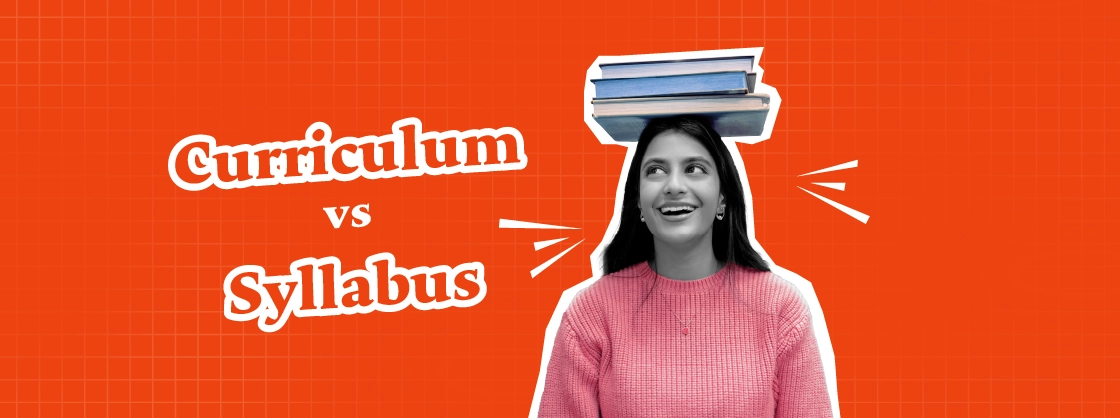Difference Between Curriculum VS Syllabus
Table of Contents
The common difference between curriculum and syllabus is that a syllabus is a unit or part of a course. The former includes the syllabus, timetable, course structure, and lesson plans. Most students are confused when asked about the differences between these two interrelated terms. While curriculum and syllabus have similarities, there are major differences as well.
Therefore, before starting your academic course, you must fully understand its structure and parts of your subjects. Now, let’s dive in and understand the key differences and meanings of curriculum and syllabus.
Major Differences Between Curriculum and Syllabus
The curriculum contains the entire content of your academic course. It focuses on the holistic development of students, like intellectual, emotional, social, and physical growth. At the same time, the syllabus summarizes all topics included in a subject or discipline for a semester or academic year. Here’s a comprehensive distinction between Curriculum and Syllabus.
- The curriculum is prescriptive because its structure is followed in a specific manner. On the other hand, the syllabus is descriptive and flexible, allowing it to be completed in various ways.
- The curriculum is carefully designed by the college or school administration, while the syllabus is created by the teachers or education board.
- The curriculum remains the same for all teachers, whereas the syllabus may vary and is covered differently depending on the teaching style of individual educators.
- “Curriculum” originates from the Latin word “currere,” meaning to run or course. Meanwhile, “syllabus” comes from the Greek word “sittyba,” meaning title slip or label.
- There is also a difference in scope. The curriculum is broader and includes the structure of the course, while the syllabus is limited to a specific subject or unit.
- The curriculum is provided for the entire duration of the course, typically 2 to 4 years. In contrast, the syllabus is provided for a specific semester or academic year.
The curriculum is a superset of all subjects with a tentative assignment of when the subject is to be taught; the syllabus, conversely, includes a more detailed discussion outlining the contents of every individual subject under the course.
The table below highlights the key differences between curriculum and Syllabus.
| Categories | Curriculum | Syllabus |
| Definition | These are a set of guidelines of your academic contents and units that will be covered by your academic institution. | This is a document containing all the details about the topics, subtopics, and concepts to be taught in a particular subject. |
| Structured for | Complete Course | Each Subject Under the Course |
| Administered by | Government, College Administration, School Faculty | Exam Board |
| Nature | Perspective | Descriptive |
| Scope | Wide | Narrow |
| Settings | Cannot be adjusted easily | Can be adjusted as per class requirements |
| Term Duration | Until the Course lasts | For a fixed term (semester to academic year) |
What is Curriculum?
A curriculum is a set of guidelines designed to help teachers and educators with the content of a course. It is a study plan that gives directions to the course, its content, and the methods involved in teaching. It advises what will included in the course and its importance.
Your administrator of the university or institute designs the curriculum. It also allows teachers to assess the effectiveness of their teaching through standardized tests.
What is Syllabus?
The syllabus is a descriptive list of topics and sub-topics included in a course with their summary. It highlights the subjects and their courses taught throughout the semester or academic year. It can be designed by teachers per the class requirements.
A syllabus includes class schedules, assignments, tests, projects, etc. It also contains important dates like assignments due, exams, project submission, etc.
Conclusion
In conclusion, curriculum and syllabus have some similarities but major differences. The curriculum has a broader aspect than the syllabus. It is structured for the complete course, is administered by the university or institution officials, and has a perspective nature. The syllabus includes the topics, subtopics, and concepts to be taught in a particular subject and is designed by the exam board or teachers.






